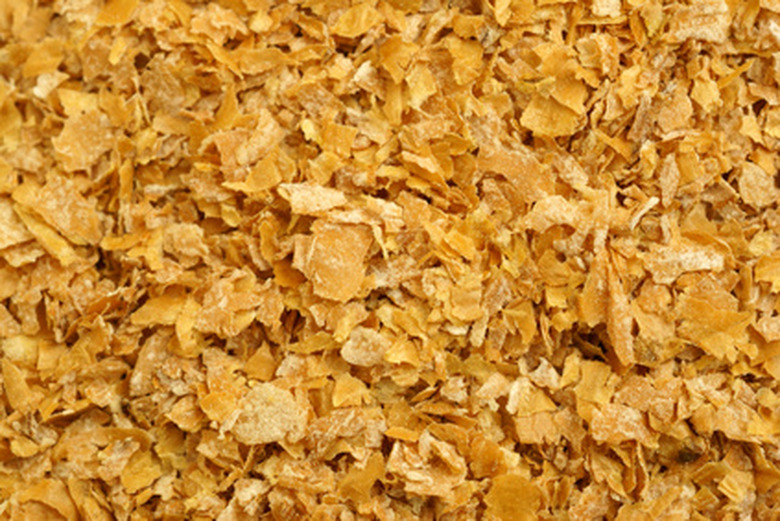How To Fatten Up Compost Worms
Things Needed
- Chicken layer feed
- Cornmeal
- Powdered whole milk
- Bran
- Agricultural lime
- Large mixing bowl
- Measuring cup
- Mixing spoon
- Plastic storage bags
- Active worm bin
- Spray bottle
- Water
- Shredded newspaper
- Food scraps
For those interested in green living but not so interested in doing a lot of extra work, having a worm bin is the ideal way to produce a nutrient-dense soil amendment for gardens and potted plants. Fattening up your compost worms is a management practice that you might consider utilizing if you plan on using worms as breeding stock or selling some of them to fisherman for bait. The key to fattening up compost worms is providing them with grain-based products. According to Planet Natural Garden Supply, an online company that has supplied natural and organic gardening products since 1991, you can easily fatten up your compost worms in just a few months by giving them a grain supplement mixture composed primarily of inexpensive chicken layer feed.
Step 1
Collect your ingredients for your compost worm fattener supplement. Look for chicken layer pellets and agricultural lime (also called garden lime) at your local agriculture supply store. You should be able to find the corn flour (more commonly called cornmeal), powdered whole milk and bran at your local grocery store.
- For those interested in green living but not so interested in doing a lot of extra work, having a worm bin is the ideal way to produce a nutrient-dense soil amendment for gardens and potted plants.
- According to Planet Natural Garden Supply, an online company that has supplied natural and organic gardening products since 1991, you can easily fatten up your compost worms in just a few months by giving them a grain supplement mixture composed primarily of inexpensive chicken layer feed.
Step 2
Get out a large mixing bowl and measuring cup. Measure out five cups of chicken layer feed and dump it in your mixing bowl. Add one cup of cornmeal and one cup of powdered whole milk to the mixing bowl. Dump in two cups of bran, followed by one cup of agricultural lime.
Step 3
Mix your worm compost fattener supplement ingredients together with a mixing spoon, stirring until the materials are thoroughly blended. Store the mixture in a plastic zipper bag.
Step 4
Measure out two to three cups of your feed supplement and sprinkle it evenly across the entire surface of your worm bin bedding. Mist the bedding with a light spray of water from a spray bottle and cover it with 1 to 2 inches of fresh, shredded newspaper bedding. Repeat this feeding process every two to three days for up to three months. Continue to provide your compost worms with a regular diet of food scraps, such as vegetable and fruit scraps, one to two times per week.
- Get out a large mixing bowl and measuring cup.
- Measure out two to three cups of your feed supplement and sprinkle it evenly across the entire surface of your worm bin bedding.
Tip
Bran consists of the outer layers of cereal grains that are removed during grain processing. In a pinch, if you're unable to locate bran for your recipe, substitute an equal amount of old-fashioned, whole-grain oatmeal, which contains oat bran. Agricultural lime is often available for purchase only during the spring, summer and early fall. If you're unable to find agricultural lime for your worm fattener supplement, you can substitute with eggshells. Mash up 12 eggshells in your blender until they're pulverized to a fine powder. Measure out one cup of the powdered eggshells and add them to your food supplement mix in place of the lime. According to Janet Hogan Taylor, co-author of "The Worm Book," grit materials, such as eggshells and lime, allow your worms to grind up and digest their food more quickly.
References
- PlanetNatural.com: What to Feed Your Red Wriggler Worms
- "The Worm Book;" Janet Hogan Taylor & Loren Nancarrow; 1998
